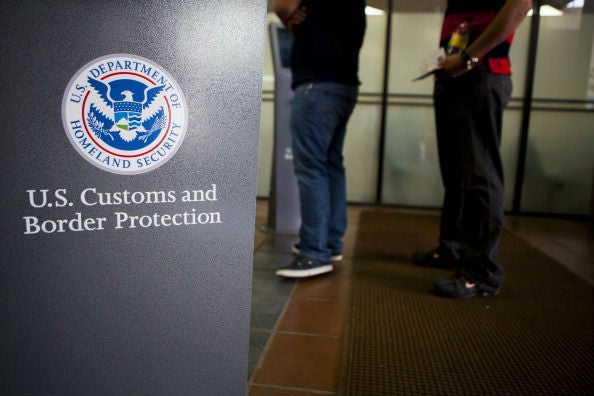US border officials test eye and face-scanning technology at Mexican border
The tests are expected to run through May 2016

US Customs and Border Protection (CBP) is upping its monitoring of immigrants as it tests out new eye and facial recognition technology at the Mexican border.
CBP started to test new biometric technology on foreign migrants who are exiting the US via the Otay Mesa checkpoint between San Diego and Tijuana on 11 February.
The program will run until May 2016, officials told The Independent in a statement.
“CBP is committed to testing, deploying, and implementing biometric technologies in a way that accomplishes our security facilitation missions,” said Pete Flores, San Diego Field Operations Director. “This step will help inform technological next steps in developing and implementing a biometric entry/exit solution, not just on the land border, but in all environments.”
Prior to this field test, people leaving the country were rarely screened at the border checkpoint.
US citizens will only have to swipe their identification, such as passports or state IDs, upon entry and exit.
CBP started to enforce more stringent screening on those migrants entering the country in December, requiring non-US citizens to provide an iris image and facial photograph.
The Associated Press reported that border officials are using these trials to determine the quickest, least invasive way to screen people entering the US.
Assistant port director of the Otay Mesa cargo facility Charmaine Rodriguez said that the scans will help determine whether foreigners have overstayed their visas.
Although CBP has said it will not share images and data with other agencies, critics from the American Civil Liberties Union (ACLU) remain skeptical.
“Certainly experience has shown how difficult it is to secure databases,” a senior policy analyst for the ACLU told the AP.
He added that once iris and facial scans are “the norm” at border checkpoints, they will likely be shared across governmental agencies.
The Otay Mesa checkpoint is by far one of the busiest ports of entry between the US and Mexico.
“It’s fine as long as it’s fast and easy,” said Marco Cruz, who crosses the border multiple times per week. “In the past, it’s been a big problem crossing the border, but this was fast.”
Join our commenting forum
Join thought-provoking conversations, follow other Independent readers and see their replies
Comments
Bookmark popover
Removed from bookmarks